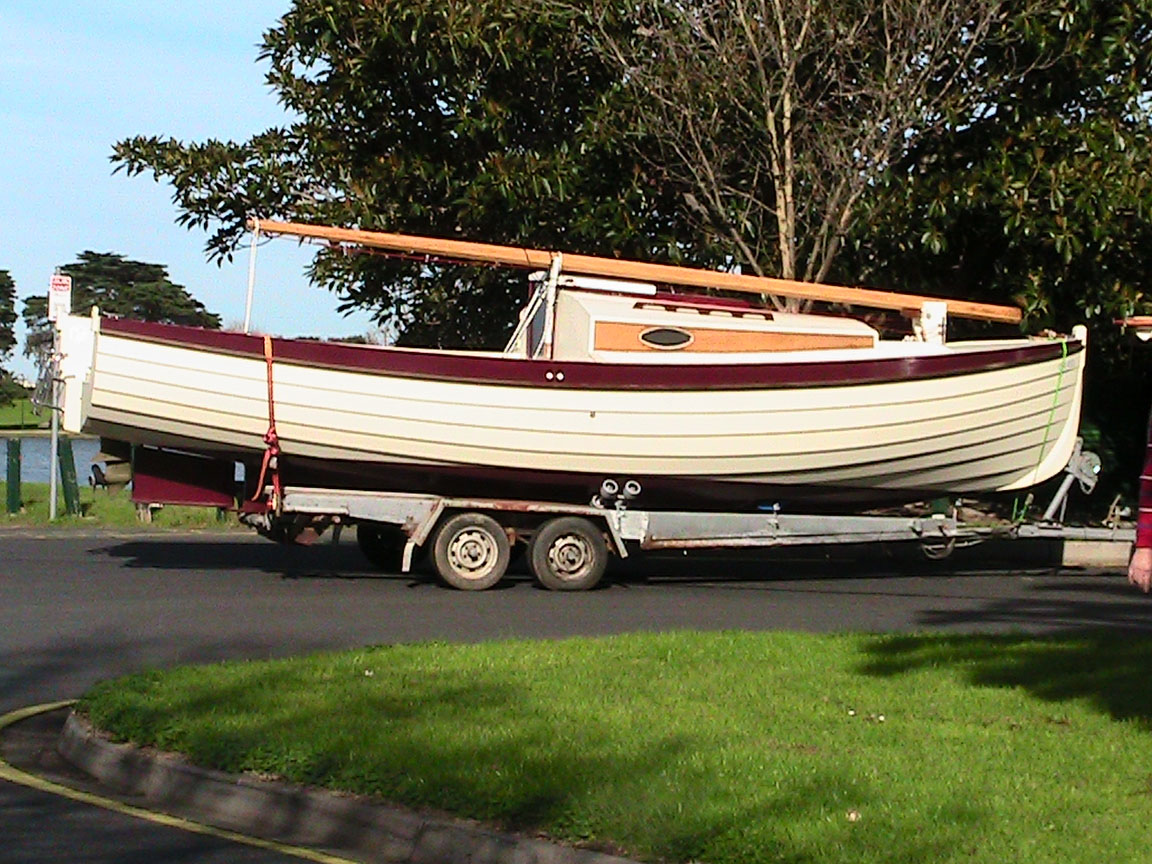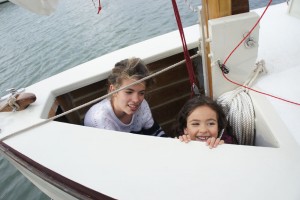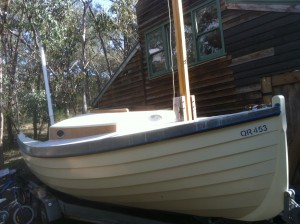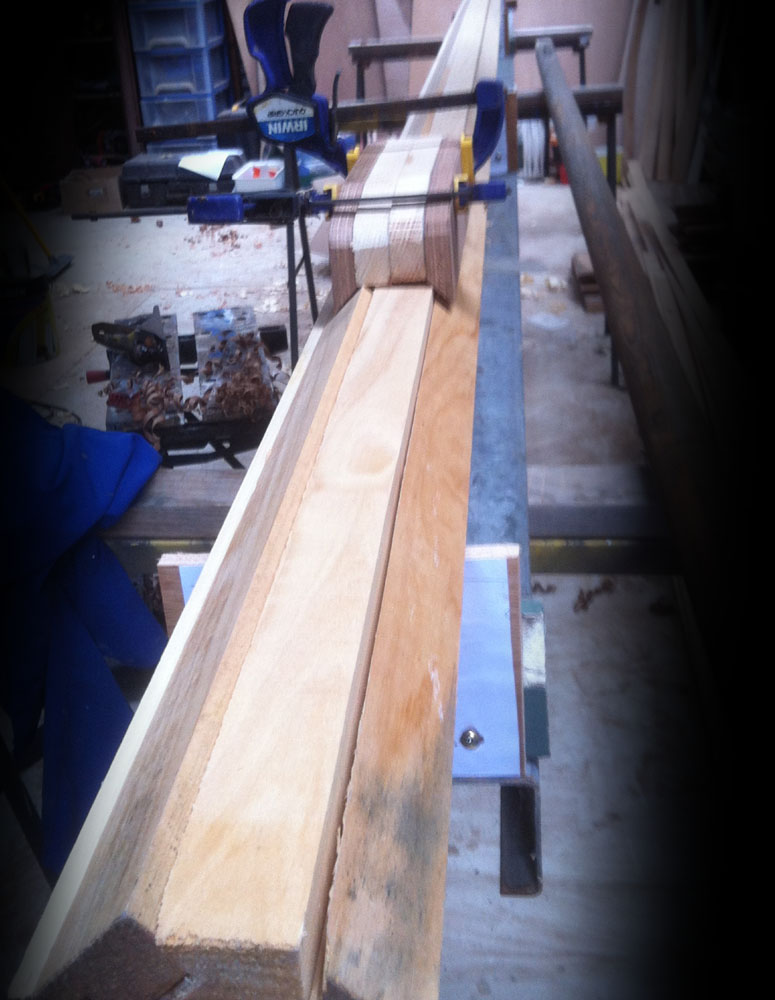Mast Tabernacle
Chebacco designs all have relatively short unstayed masts. They are easy to store, and quick to put up. I really like Bolger’s thinking here – it always irks me that when I sail with friends in their trailer yachts, that you spend between one and two hours in the carpark setting up and packing away. My Chebacco takes just a few minutes to get ready or to pack away.
There has been some discussion about the different ways to step the Chebacco Masts. The original design had a short slot in the deck with an insert piece, the RD has a somewhat more sophisticated clamp at the partner with turnbuckles. The cruiser introduced a tabernacle (hinge).
The Chebacco 25 has a 5″ x 20′ hollow timber mast and the design calls for an under/over retaining partner arrangement. I was concerned that the mast may still be difficult for one person to step, so I decided on a tabernacle setup. I further decided to counterweight the foot of the mast to make stepping and unstepping a one handed 10 second operation.
(I was inspired by descriptions of yachts and barges on the Norfolk Broads shooting bridges – getting the sail and mast down, getting under the bridge and then getting underway again in a few minutes.)
The mast is a birdsmouth hoop pine construction, 5″ at the step tapering to 3″ at the masthead. The bottom 3′ is filled with lead shot (I think I managed to get 20kg in before sealing the filling hole with a wooden plug). The hinge pin is set about 12″ above the deck so that the mast folds neatly on the cabin roof and is held by two stout Douglas fir partners. These partners are bolted to a bulkhead which is further reinforced by a 6×2 crossmember extending from gunwale to gunwale. The hinge pin is 1″ solid stainless bar held with “R” clips on either end. This size is not needed for strength but I am hoping the large diameter will reduce the wear in the bearing holes over time. The bearing holes in the partners and the mast hinge block are lined with graphite filled epoxy.
All of the weight of the mast is supported by the hinge pin, the foot of the mast does not rest on a step. The hinge pin does not go through the mast itself but through an offset hinge block that you can see in the photos. This is partly for strength but also to make the mast stand while I am fitting the retaining pin. When you lift the mast it gets to a point where the counterweight takes over and the mast stands itself up. The retaining pin is a piece of rod that crosses in front of the foot of the mast through a couple of metal rings. I jam a small wedge in between the retaining rod and the mast to stop any movement fore-aft.
It works! My 10 year old son can step the mast in a minute. I don’t need to store the mast for road transport because it is shorter than the hull, I just tie it down to it’s crutch. I suspect my mates envy my extra hour and a half on the water while they are fiddling with shackle keys and gin poles.
Andrew
P.S. you can also see the anchor/anchorman well in these photos, this is a feature of the Chebacco 25 only. I have found this handy for standing in while raising the anchor or while working on the mast (as Bolger intended). I have also found it VERY useful for storing children in …
P.P.S. dont forget to email me your Chebacco stories to publish <My Christian Name>@Chebacco.com
Here you can see a hole in the bulkhead where I had intended to run a line from the base of the mast to a winch inside the cabin. The counterweighting of the base of the mast instead made this redundant and much simpler.
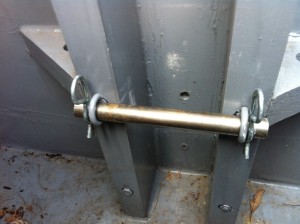
Retaining pin holds the bottom of the mast in place

